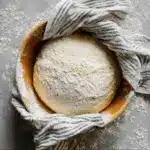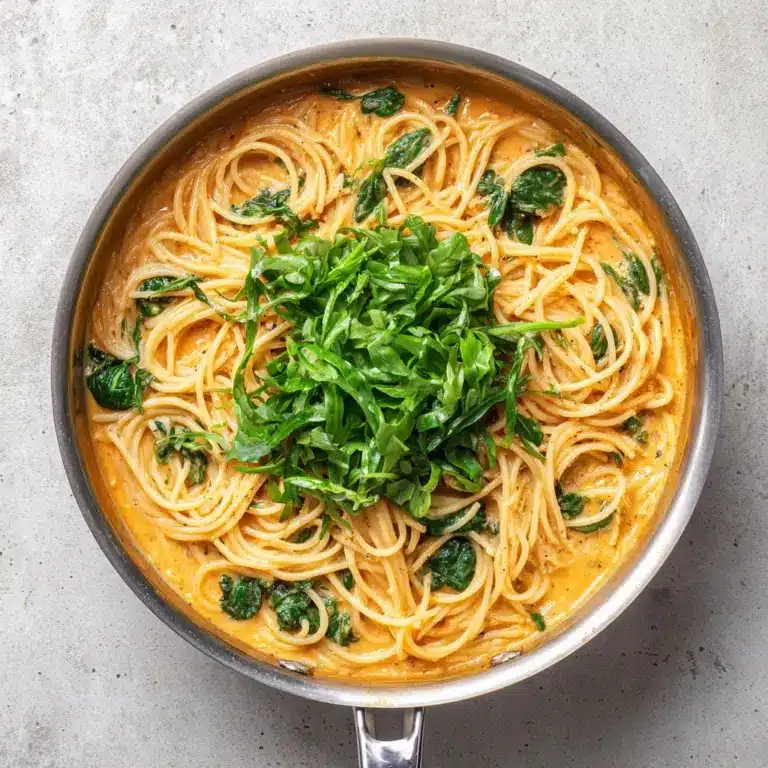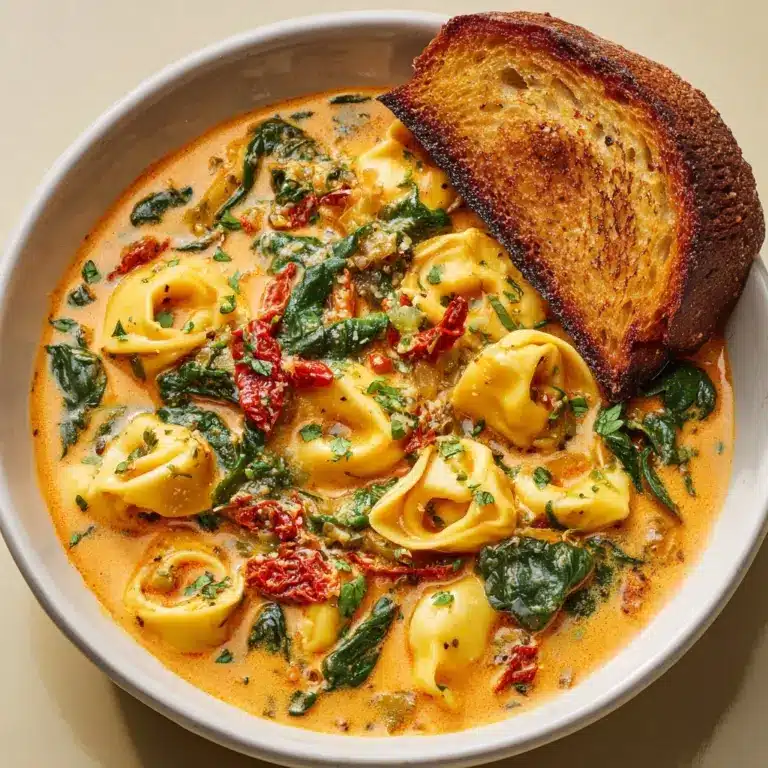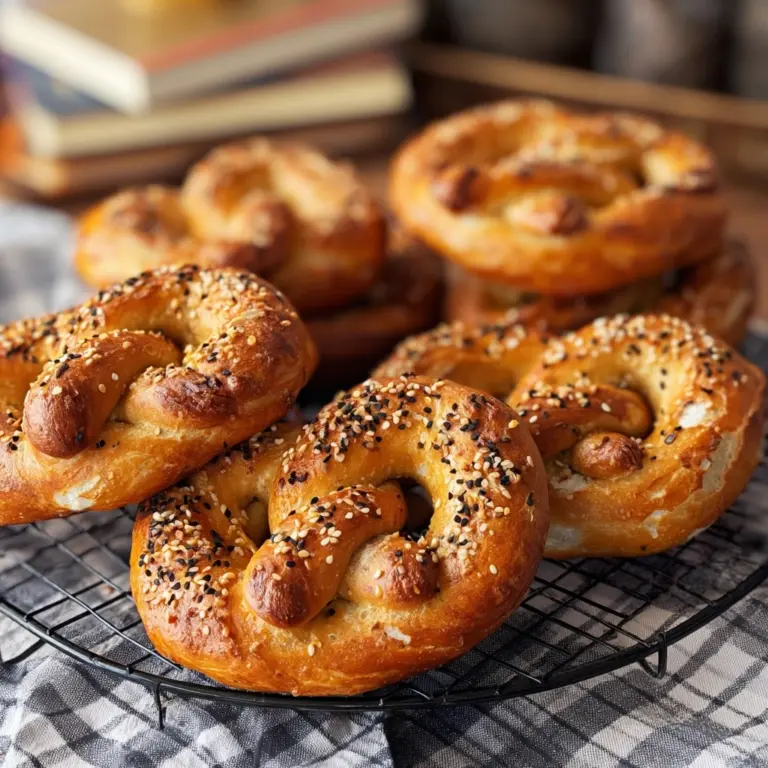Homemade Pizza Dough Recipe
If you’ve ever dreamed of crafting a pizzeria-worthy crust right in your own kitchen, this Homemade Pizza Dough recipe is your golden ticket. It’s simple, straightforward, and bursting with flavor thanks to a clever blend of herbs and garlic powder. Whether you’re a beginner or a seasoned home chef, preparing this dough from scratch gives you control over every aspect of your pizza’s foundation — from that perfect chewy bite to the crispy edges that hold your favorite toppings beautifully.
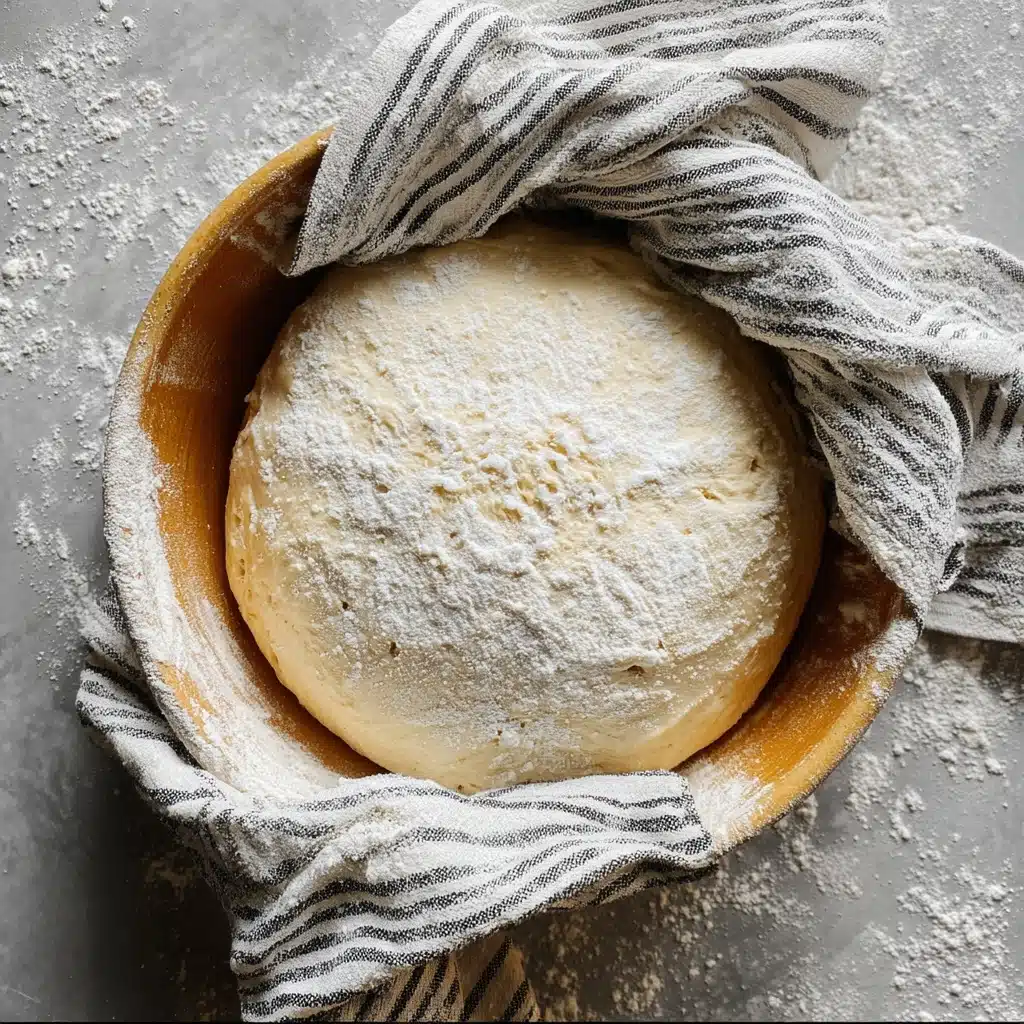
Ingredients You’ll Need
These ingredients are wonderfully simple yet incredibly important for a dough that rises well, tastes great, and has just the right texture. Each component adds something special to your pizza crust, making it truly irresistible.
- 2 cups all-purpose flour: The base of your dough, providing the structure and chew you want in a classic crust.
- 1 teaspoon active dry yeast: This little helper makes the dough rise and become airy, giving your pizza a light texture.
- 3/4 cup warm water (around 110°F): Just the right temperature to activate the yeast without killing it.
- 1 teaspoon salt: Enhances every other flavor and strengthens the dough’s gluten network.
- 1 tablespoon olive oil: Adds moisture and richness, helping your dough stay tender but crisp.
- 1 teaspoon sugar: Feeds the yeast, encouraging a healthy rise and a hint of sweetness in the crust.
- 1 teaspoon dried oregano: Introduces an aromatic, herbaceous twist that complements classic pizza toppings.
- 1/2 teaspoon garlic powder: Adds a subtle savory depth to the dough itself, elevating the flavor profile.
How to Make Homemade Pizza Dough
Step 1: Activate the Yeast
Start by combining the active dry yeast and sugar with the warm water in a small bowl. Mixing these together and waiting for 5 to 10 minutes lets the yeast wake up and grow frothy — a clear sign it’s ready to bring your dough to life. This step is crucial because if the yeast doesn’t activate, your dough won’t rise properly.
Step 2: Mix the Dry Ingredients
In a large mixing bowl, whisk together the flour, salt, oregano, and garlic powder. This blend of dry ingredients forms the flavor base and ensures every bite of dough is infused with those delicious herb and spice notes.
Step 3: Combine Wet and Dry
Once the yeast mixture is foamy, pour it into your dry ingredients along with the olive oil. Stir everything with a wooden spoon or spatula until the dough comes together into a shaggy mass — this is where the magic begins to form.
Step 4: Knead the Dough
Transfer your dough onto a floured surface and knead it for about 5 to 7 minutes. This part might seem like a workout, but kneading develops the gluten strands that give your pizza crust that beautiful elasticity and chew. If it feels sticky, dust with a little more flour but be careful not to add too much, which can dry it out.
Step 5: Let the Dough Rise
Place your dough in a lightly greased bowl and cover it with a damp cloth or plastic wrap. Set it in a warm spot to rise for 1 to 1.5 hours or until it doubles in size. This rest period is when the yeast works its magic, creating those tiny air pockets that make pizza dough delightfully light and airy.
Step 6: Punch Down and Shape
After rising, gently punch down the dough to release trapped air. Then shape it into a ball or divide it if you want smaller pizzas. Your dough is now ready for toppings, baking, or storing for later use.
How to Serve Homemade Pizza Dough
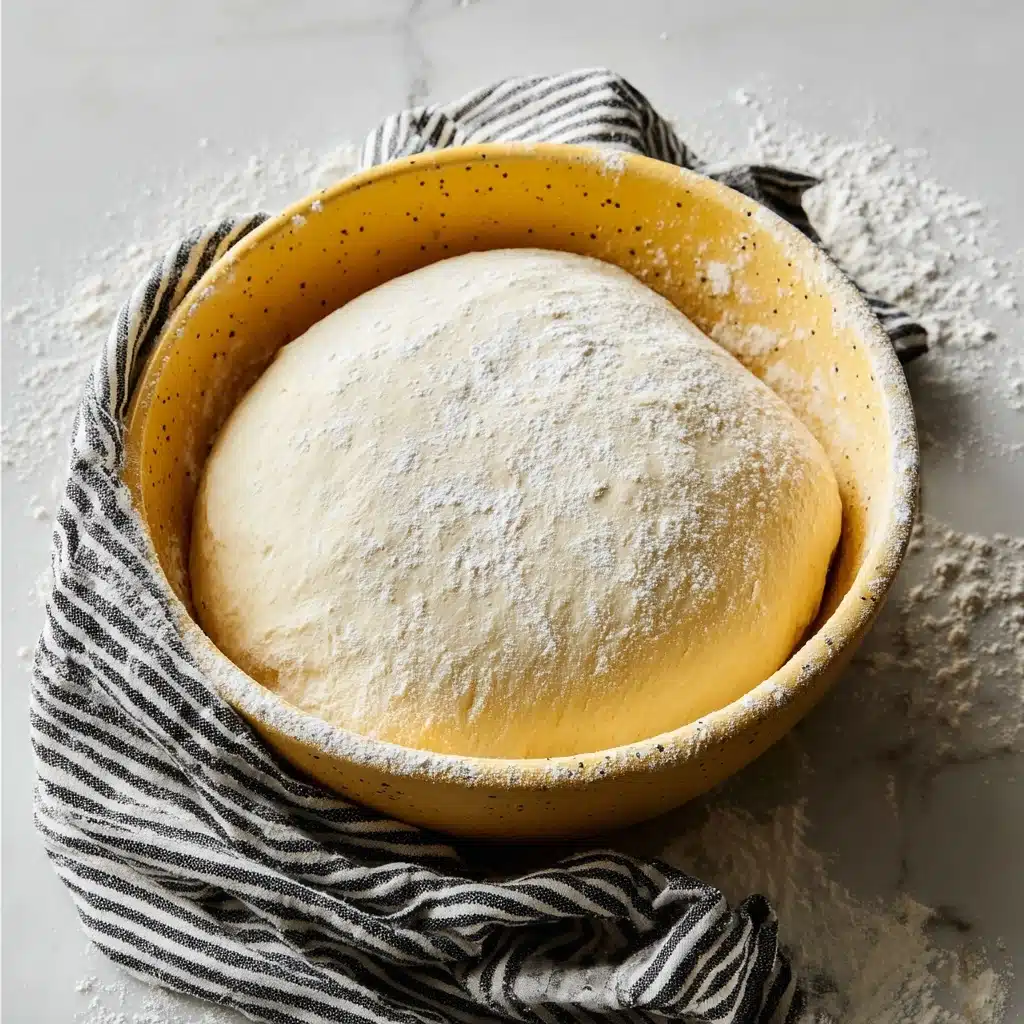
Garnishes
Once your dough is rolled out and topped, don’t be afraid to get creative with garnishes. Fresh basil leaves, a drizzle of extra virgin olive oil, or a sprinkle of flaky sea salt added right after baking can transform your pizza into a gourmet experience. These little touches bring layers of aroma and flavor that complement the rich base you’ve so lovingly made.
Side Dishes
Serving homemade pizza dough with vibrant side dishes elevates your entire meal. Think fresh green salads with tangy vinaigrette to balance the richness of the pizza, or roasted vegetables that add texture and nutrients. A bowl of garlic-infused marinara sauce also makes a lovely dipping companion.
Creative Ways to Present
Beyond traditional pizza rounds, your homemade pizza dough can shine as individual calzones, stuffed breadsticks, or mini flatbreads perfect for grazing. Rolling the dough into twists or knots brushed with garlic butter is another fun and tasty way to enjoy the fruits of your labor and dazzle your guests with unexpected presentations.
Make Ahead and Storage
Storing Leftovers
If you have leftover dough after making your pizza, wrap it tightly in plastic wrap and store it in the refrigerator for up to 3 days. This slows down the yeast without killing it, so you can enjoy fresh dough again soon without the hassle of starting from scratch each time.
Freezing
For longer storage, homemade pizza dough freezes beautifully. Divide it into portions, wrap each one well in plastic wrap, then place in a freezer bag. When you’re ready to use, thaw overnight in the refrigerator and let it come to room temperature before shaping. This flexibility makes always having dough on hand totally doable.
Reheating
If reheating baked pizza, the best method is to use an oven or toaster oven set to a moderate temperature to revitalize the crust’s crispness without drying it out. Avoid the microwave if you want to keep that fresh-baked charm intact — it often makes the crust chewy or soggy.
FAQs
Can I use whole wheat flour instead of all-purpose flour?
Absolutely! Whole wheat flour can add a nutty flavor and more fiber to your dough. Just keep in mind it may result in a denser crust, so you might want to mix it with some all-purpose flour or increase your water slightly for a better texture.
What if I don’t have warm water at the right temperature?
Yeast is sensitive, so water that’s too hot can kill it, and water that’s too cold won’t activate it properly. Aim for about 110°F by testing with a thermometer or your finger; it should feel warm but not hot. If you don’t have a thermometer, warm tap water usually works well.
How long can I let the dough rise?
While 1 to 1.5 hours is ideal, you can also let the dough rise longer — even overnight in the refrigerator. A slow, cold rise develops more flavor and makes the dough easier to digest. Just bring it back to room temperature before shaping and baking.
Can I make this dough in a stand mixer?
Yes! Use the dough hook attachment to combine and knead the ingredients on a low setting. This saves time and effort, especially for those who love the idea of homemade pizza dough but want a bit less work.
What toppings go best with this homemade pizza dough?
This dough pairs perfectly with any topping you love — from classic margherita with fresh mozzarella and tomatoes to adventurous combinations like BBQ chicken or roasted veggies. The herbal notes in the dough blend seamlessly with both simple and bold flavors.
Final Thoughts
Making your own Homemade Pizza Dough is truly one of the most rewarding kitchen adventures you can embark on. It brings warmth, satisfaction, and a delicious foundation for endless pizza creativity. Once you take that first bite of your perfectly crisp, chewy crust, you’ll wonder why you ever thought otherwise. So grab your ingredients, roll up your sleeves, and get ready to impress yourself and everyone at your table with this fantastic homemade staple.
PrintHomemade Pizza Dough Recipe
This Homemade Pizza Dough recipe delivers a soft, chewy, and flavorful base for your favorite pizza toppings. Made from simple ingredients including all-purpose flour, active dry yeast, olive oil, and aromatic dried herbs, this dough is easy to prepare and perfect for a satisfying pizza night at home. The dough rises beautifully, creating a light texture with an herbed garlic undertone that elevates any pizza creation.
- Prep Time: 15 minutes
- Cook Time: 10-15 minutes (depending on baking method and toppings)
- Total Time: 1 hour 30 minutes to 1 hour 45 minutes
- Yield: 1 large pizza crust (12-inch) or 2 smaller crusts 1x
- Category: Bread/Dough
- Method: Yeast rising and kneading
- Cuisine: Italian
- Diet: Vegetarian
Ingredients
Dry Ingredients
- 2 cups all-purpose flour, plus extra for dusting
- 1 teaspoon active dry yeast
- 1 teaspoon salt
- 1 teaspoon sugar
- 1 teaspoon dried oregano
- 1/2 teaspoon garlic powder
Wet Ingredients
- 3/4 cup warm water, around 110°F
- 1 tablespoon olive oil
Instructions
- Combine the yeast and sugar: In a small bowl, mix 1 teaspoon of active dry yeast with 1 teaspoon of sugar and 3/4 cup of warm water (around 110°F). Stir gently and let it sit for about 5-10 minutes until it becomes frothy, indicating that the yeast is active.
- Mix the dry ingredients: In a large mixing bowl, combine 2 cups of all-purpose flour, 1 teaspoon of salt, 1 teaspoon of dried oregano, and 1/2 teaspoon of garlic powder. Whisk these ingredients together until well blended.
- Add the wet ingredients: Once the yeast mixture is frothy, pour it into the dry ingredients along with 1 tablespoon of olive oil. Use a wooden spoon or spatula to mix until the dough begins to come together.
- Knead the dough: Transfer the dough onto a lightly floured surface and knead it for about 5-7 minutes until it becomes smooth and elastic. If the dough is too sticky, sprinkle a little more flour as needed to help with the kneading process.
- Let the dough rise: Place the kneaded dough in a lightly greased bowl, cover with a damp cloth or plastic wrap, and let it rise in a warm place for about 1 to 1.5 hours, or until it has doubled in size.
- Punch down the dough: After the dough has risen, gently punch it down to release the air. Turn it out onto a floured surface and shape it into a ball or divide it into portions if you prefer smaller pizzas.
Notes
- Make sure the water is warm but not hot; around 110°F is ideal to activate yeast without killing it.
- You can let the dough rise longer for a more flavorful result due to fermentation.
- Add additional herbs or spices to the dough as desired for a custom flavor.
- If the dough sticks during kneading, sprinkle a small amount of flour gradually to avoid making it too dry.
- This dough recipe makes one 12-inch pizza crust or two smaller crusts depending on portioning.
- For a crispier crust, bake on a preheated pizza stone or baking steel if available.
Nutrition
- Serving Size: 1/4 of prepared dough (approximately 120g)
- Calories: 220 kcal
- Sugar: 2 g
- Sodium: 400 mg
- Fat: 4 g
- Saturated Fat: 0.5 g
- Unsaturated Fat: 3.5 g
- Trans Fat: 0 g
- Carbohydrates: 40 g
- Fiber: 2 g
- Protein: 6 g
- Cholesterol: 0 mg
Keywords: homemade pizza dough, easy pizza dough, pizza crust recipe, yeast pizza dough, Italian pizza base

